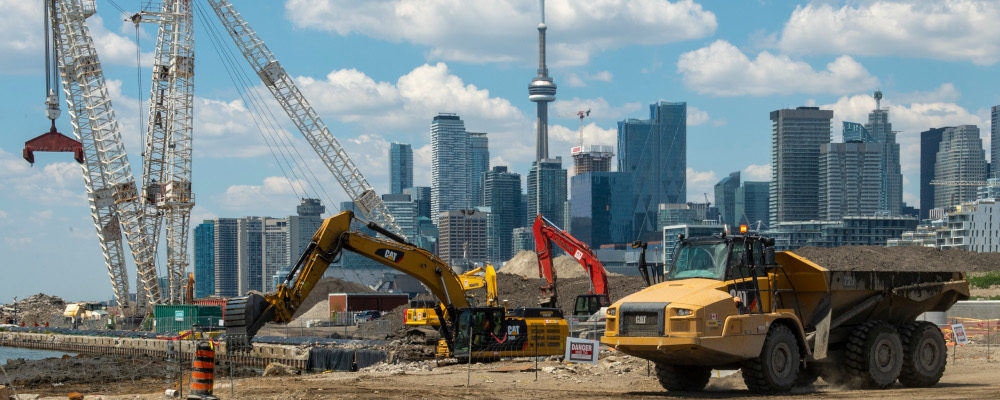As Canadians permit themselves some cautious optimism that the worst of the pandemic is finally behind us, policymakers need to shift their attention from temporary pandemic measures to the longer-term prospects for our country. At the top of that list must be stronger economic growth, serving as the foundation for progress in other areas.
While the Trudeau government regularly insists it is a big fan of economic growth, in reality, it seems far more focused on redistributing its fruits. This is alarming for the country’s prospects. Even discounting the two major economic shocks of the last two decades years—the 2008-09 global financial crisis, and the current COVID-19 pandemic—economic growth in Canada has slowed from an average of 3 percent between 1991 to 2000 to just 2 percent between 2012 and 2019.
This sputtering of our economic engines couldn’t come a worse time, as the Trudeau government pledges ever-higher spending while piling up perpetual deficits and a mountain of debt. And even if the government began to exercise some fiscal discipline, a greying population and plummeting worker-to-retiree ratio will make any plan to right the ship much harder to execute than the Chrétien-Martin effort that began in 1994.
Reducing government spending will necessarily form part of the plan, but the government must find ways to spur growth to generate the wealth needed to pay for even a pared-back state. To that end, the government should set a target—just as it routinely does for such things as immigration and carbon emission reductions—to double Canada’s GDP by 2050.
While that objective might seem audacious, it would only require an average annual growth rate of 2.5 percent—higher than the previous decade to be sure, but a figure Canada has achieved many times in previous decades.
But setting the target is the easy part. Getting there will require bold changes. What might some of those look like?
For starters, the government could recommit to the role of government as an important referee—but not a player—in the economic game. This does not necessarily require an extreme laissez-faire approach but at minimum a recognition that government is not the source of wealth creation.
Consolidating and scaling back its panoply of subsidy programs would help end harmful distortions that prop up inefficient businesses and prevent the emergence of new ones. By reducing the size of government to the G7 average and reforming the federal public sector to embrace performance-based metrics and a model based on remote-first work options, the government could better develop a more geographically diverse workforce, one more representative of the country it serves.
Similarly, the government could pivot away from the fanciful industrial strategy of subsidizing politically popular sectors (which end up being similarly subsidized by our peer countries anyway) and instead turn to better cultivating those economic sectors in which Canada has a real and existing competitive advantage or the unique potential to develop one. These might include natural resources, agriculture, and life sciences.
An overhaul of the tax code to focus on simplification would ease compliance burdens and eliminate economic distortions. Recent piecemeal attempts at tax reform, such as the disastrous suite of small business tax proposals in 2017, left the government bruised. A better approach might be to consider a royal commission on taxation similar to the four-year effort launched in 1962 that culminated in the 1966 Carter report.
Aside from being simpler, taxes will need to remain competitive. With peer countries such as the United Kingdom announcing significant increases in corporate taxes, Ottawa will be tempted to follow suit. Yet that would put Canadian businesses at a further disadvantage vis-à-vis their American counterparts, and prejudice Canada as a destination for foreign investment.
While the political zeitgeist might be blowing against free trade, the government should still pursue new trade deals with trustworthy partners committed to the rule of law and liberal democratic principles, while leveraging and expanding Canada’s diplomatic presence abroad to better exploit existing trade deals. Opening up highly-protected sectors such as airlines and telecommunications to more competition by allowing for an integrated North American market would be a boon to consumers. The government could also work to reduce complex compliance burdens that benefit large incumbents to the detriment of new entrants to the market.
And speaking of eliminating barriers, much more can be done to break down internal trade barriers. Some provinces, including Alberta, have acted unilaterally to reduce them, but Ottawa must lead. The economic benefits of boosting interprovincial trade are low-hanging fruit that should be picked.
The government could look at creative ways to use the federal spending power to address the housing crisis and counter municipal NIMBYism. This will become increasingly urgent since without significant action, population growth, especially in urban areas, will continue to outpace new housing supply, and already sky-high prices will climb further beyond the reach of all but the wealthiest few.
Refocusing infrastructure spending on actual physical infrastructure, as opposed to vanity projects, is long overdue. This means building more roads, military capability, and concrete measures to support climate change adaptation such as floodways and seawalls.
On climate change, if the government wishes to be truly ambitious it should seek to fight it on a global rather than a national level, by focusing on how much Canada’s contributions can reduce total global emissions by as much as possible. This could include partnering with other countries, such as India, to boost our energy exports, thereby helping reduce their reliance on dirtier forms of energy like coal.
Finding ways to further boost our human capital should also be a priority: high school dropout rates remain elevated in low-income communities and among Indigenous Canadians and the federal government should work with provinces to ensure as many young people as possible have the tools they need to enter the workforce. And while universities have long been on the federal radar, Ottawa should follow the lead of provinces, including Ontario, by devoting more attention and resources to promoting colleges and skilled trade apprenticeships. Social supports should be rethought to incentivize workforce participation, for example by boosting pro-work measures like the Canada Worker Benefit.
Transformative policies, like the introduction of the GST or the embracing of free trade with the United States, are difficult to envision in today’s political environment. But to achieve the essential goal of robust economic growth, major changes will be necessary and will require serious political leadership. For the sake of Canada’s future, we should demand our political leaders spend more time thinking and talking about them.




